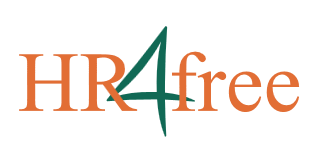It is well-known that absenteeism is costly, to the extent that it is often that a 1-to-1 ratio between the company’s absenteeism rate and its cost in percents of the total payroll is often assumed. This is due to the fact that the replacement and management of absent employees needs to be financed and that this situation causes additional costs in terms of overtime work and disorganization.
This calculation however only partially accounts for the total indirect costs incurred by the company, which include the damage to the company’s image, a lower quality of its services and even possibly a drop in the level of motivation of the more diligent employees.
Being able to deal with the company’s absenteeism rate thus represents a critical issue to the company’s management, for when it reaches a certain level, it will impact the health of the organization itself. Moreover, it is most likely that new employees who join a “diseased” organization will themselves be “contaminated”.
“Our aim, as an employer, is to ensure that our employees enjoy their work because they are well-trained, listened to, respected, given responsibility to and evaluated with fairness.” The management of absences and late arrivals thus fully belongs to the company’s employer branding strategy (article).
TOOLS
First of all, the company should determine a “threshold rate”, i.e. the maximum absenteeism rate acceptable, which represents an ideal that should be strived for. In Switzerland, this rate is comprised, in average, between 2 and 5% of worked hours, depending on the industry.
It would then be in the company’s best interest to design a systematic follow-up process for all cases of absenteeism, while differentiating the possible situations they may reflect. The most straightforward way of structuring this process is to refer to the tranches of the company’s insurance policy and design a standardized response in each situation.
PRACTICE
First-level intervention – preventive interviews: this measure can be taken by the direct superior when a significant modification in the employee’s behavior and/or performance (late arrivals, output…) is observed. A preventive procedure is then undertaken, the contents of which are the following:
- A 1st assessment interview is conducted in order to jointly explore the situation with the employee in question. It is possible to resort to the DESC technique and to apply the methodology of the assessessment interview (guidelines).
- Evaluation phase (2 to 3 months)
- Two scenarios may arise at this point:
| The situation improves | The situation does not improve |
| A final interview is arranged. The process is closed and conclusions are made. | A 2nd assessment interview is conducted in order to clarify the situation, and a new assessment phase is set up: |
| NB: do not forget to congratulate the employee for the change observed! |
|
II. Second-level intervention – follow-up measures: this action is conducted jointly by the direct hierarchical superior, the HR Department and the possible partner(s) concerned. It ensues from the observation that the situation has not improved following the first-level intervention. It consists in taking the following steps:
- A new assessment interview is conducted; it should gather the employee, the direct hierarchical superior, an HR professional and the external partner specialized in the observed malfunction (doctor, alcoholism expert, etc.). The aim of this interview is to clarify the goal of the intervention and to reach an agreement for the continuation of the follow-up process.
- Two scenarios may arise at this point:
| The employee accepts to go through the follow-up process | The employee refuses the follow-up process |
|
|
EXAMPLE
Let us consider the example of a company that has the following insurance tranches: 0-3 days, 4-30 days and more than 30 days. It decides to implement a professional management of absenteeism procedure by including late arrivals into the 0-3 days tranche. The annexed table provides you with a sample process for the management of absenteeism and late arrivals (responsibility assignment matrix) with the Management by Coaching (MPC™) methodology.
SWISS LAW
In Switzerland, the social insurances that are referred to in the former example are the following ones:
- Sickness insurance (private)
- Unemployment insurance
- Accident and occupational disease insurance
- Family allowances
- Income compensation allowances in case of military service and maternity
- Occupational pension plan :
1. Basic pension insurance (1st pillar)
- Old-age insurance
- Survivors’ benefits
- Invalidity insurance
2. Occupational benefit plans concerning old-age, survivors and invalidity (2nd pillar)
3. Linked individual provident measures (3rd pillar a)







